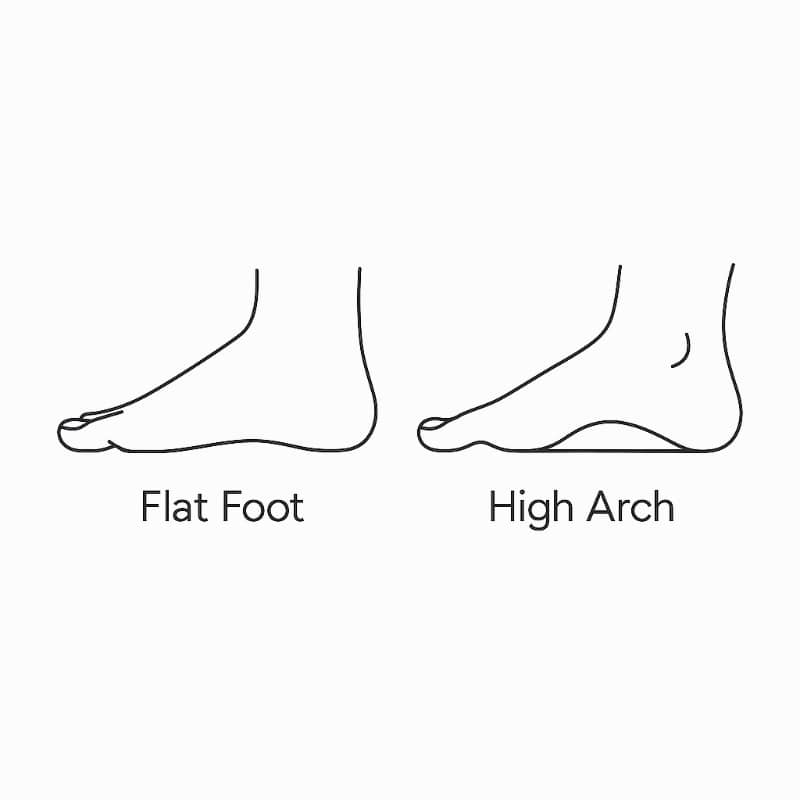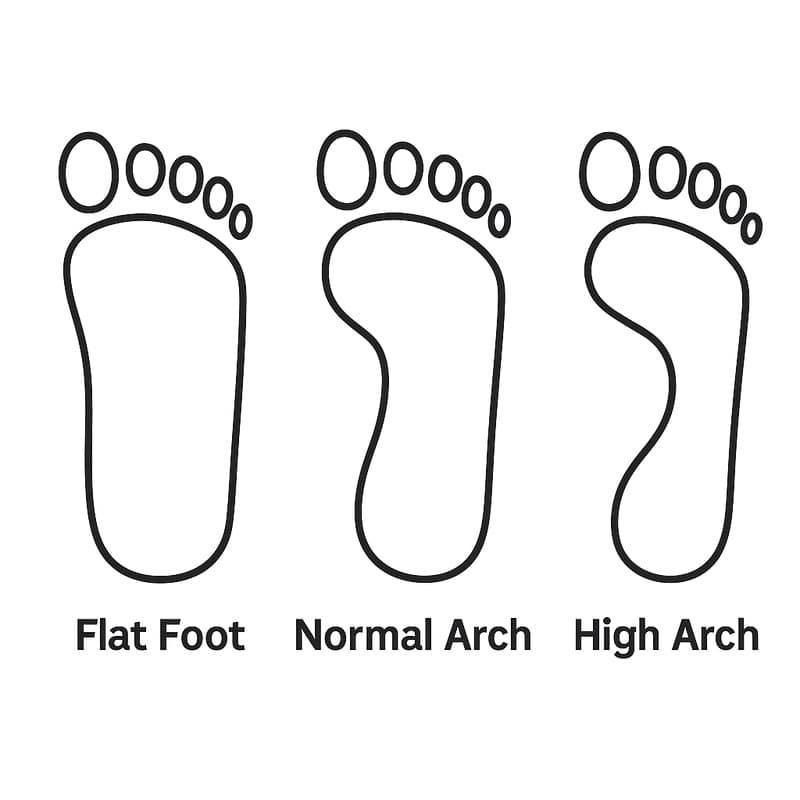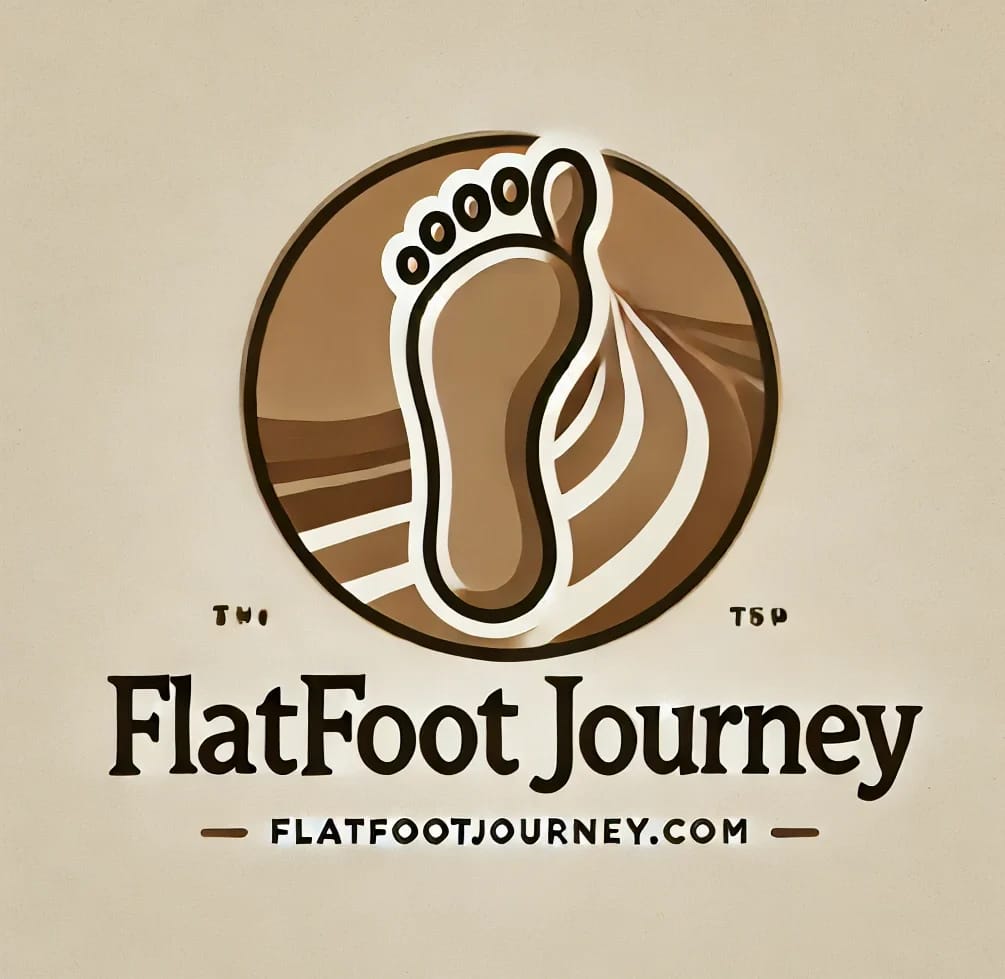When it comes to foot health, high arches vs flat feet is one of the most important comparisons to understand. Most people know about flat feet, but high arches bring their own challenges too.
Knowing whether you have flat feet like me, or high arches, can help you manage pain, choose the right shoes and improve your comfort every day. Let’s break them down side by side.
Flat Feet Explained
Flat feet (also called fallen arches or pes planus) happen when the arch is very low or completely collapsed, so the whole sole touches the ground. Some people only notice this when standing, while others have no arch at all—even when sitting.
- Appearance: A wide footprint with little to no inward curve.
- Causes: Can be inherited, caused by aging (weakening tendons), injuries, or conditions like obesity or posterior tibial tendon dysfunction.
- Common Issues: Foot pain, plantar fasciitis, bunions, shin splints, and even discomfort in the knees, hips, or lower back.
- Shoes: Firm arch support is key. Stability or motion-control shoes are often recommended to keep the foot aligned.
Not sure if your feet are flat? Check out my guide on how to know if you have flat feet for simple at-home tests.
High Arches Explained
High arches (also called pes cavus) are the opposite: the arch is raised much higher than normal and doesn’t flatten much when standing. Some people only have a mild version, while others experience a much more severe form.
- Appearance: A footprint that mainly shows the heel and ball of the foot, with a very narrow or missing midsection.
- Causes: Often genetic, but can also be linked to neurological conditions like Charcot-Marie-Tooth disease, cerebral palsy, or past injuries.
- Common Issues: Heel pain, ankle instability, frequent sprains, calluses, hammertoes, claw toes, and balance problems from poor shock absorption.
- Shoes: Cushioning and shock absorption are essential. Many people also do better with flexible shoes and a wider toe box to reduce pressure.

Flat Feet vs High Arches: The Main Differences
With flat feet, the arch is collapsed, and the entire sole touches the ground. This often causes overpronation (the feet rolling inward too much), which puts stress on the knees, hips, and back. Most of the pressure falls along the inside of the foot. Shoes with strong arch support and stability features can help correct this.
With high arches, the arch is very pronounced and doesn’t absorb shock well. This often leads to supination (rolling outward), which increases ankle sprains and places pressure on the heel and ball of the foot. Cushioned shoes with shock absorption—and sometimes a wider fit—help spread the pressure more evenly.

If you’d like a deeper dive into flat feet, read my full post on Flat Feet Explained: A Beginner’s Guide.
How Do They Affect Daily Life?
Both conditions change how your body absorbs impact and distribute weight. That’s why walking, running, or even standing can feel harder.
- Flat Feet (my experience): Without supportive shoes, I feel leg fatigue and back pain after standing too long. The inward roll of my feet can make it feel like they’re “slapping” the ground.
- High Arches: Because they’re rigid, they don’t absorb shock well. Pressure builds up on the heel and ball of the foot—like walking on a pebble. Shoes often wear out faster on the outer edges because of supination.
Managing Flat Feet and High Arches
The good news? Both conditions can be managed with the right care.
- Choose the Right Shoes: Supportive and stable for flat feet; cushioned and flexible for high arches.
- Try Orthotics: Over-the-counter or custom insoles can make a big difference in comfort and alignment.
- Stretch and Strengthen: Calf stretches for flat feet, toe and arch exercises for high arches.
- See a Specialist: If pain is constant or severe, a podiatrist or physical therapist can guide you further.
Final Thoughts
Whether you’re dealing with flat feet or high arches, your feet are your foundation. Finding the right shoes and taking care of them makes a huge difference in daily comfort.
I’ll be sharing upcoming guides on the best shoes for both flat feet and high arches. These won’t just be based on my own experience — I’ll also include thorough research so you’ll see different options. Since not everyone feels the same on either end of the spectrum, my goal is to give you choices that fit your feet, not just mine.
